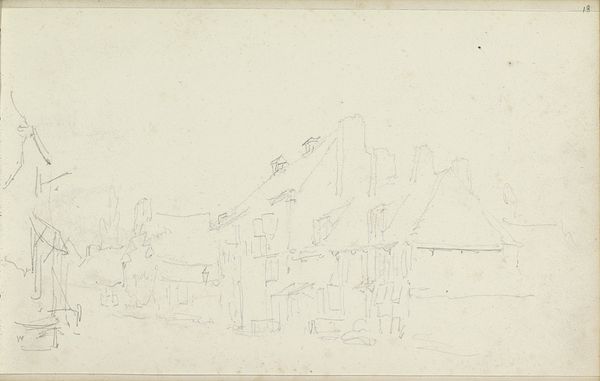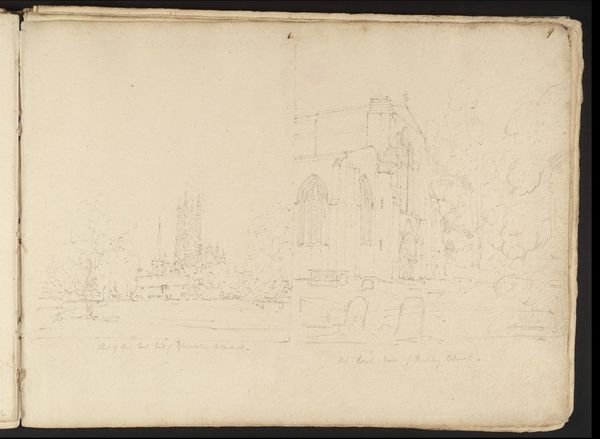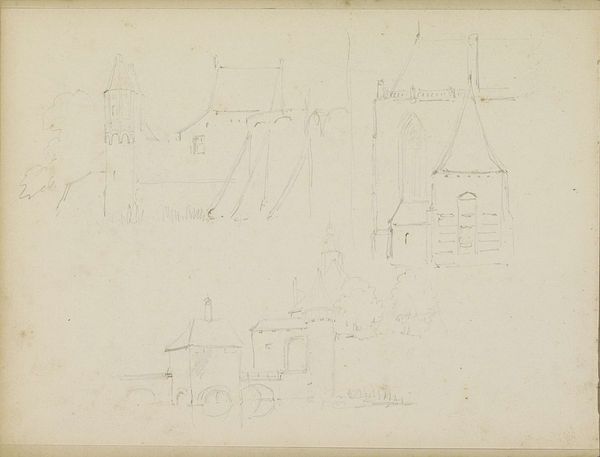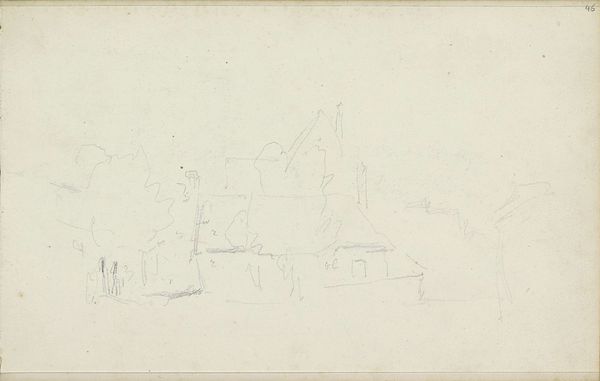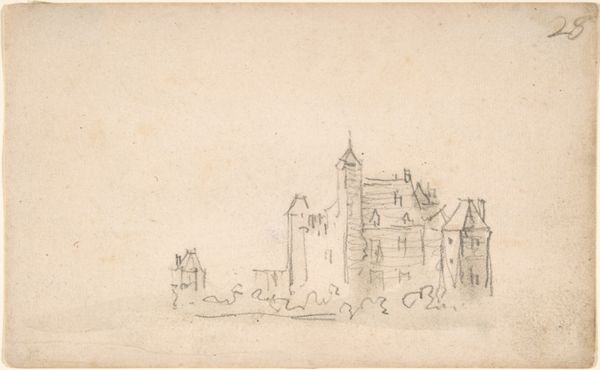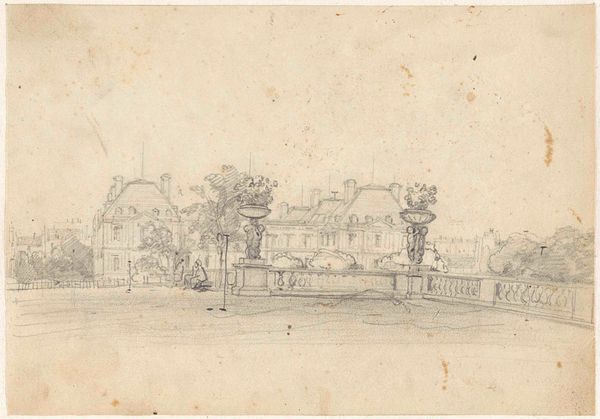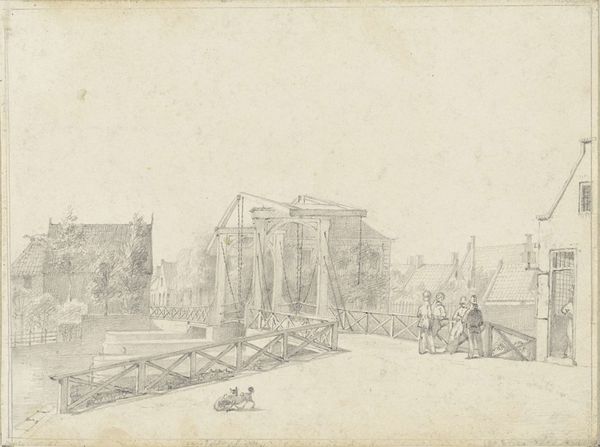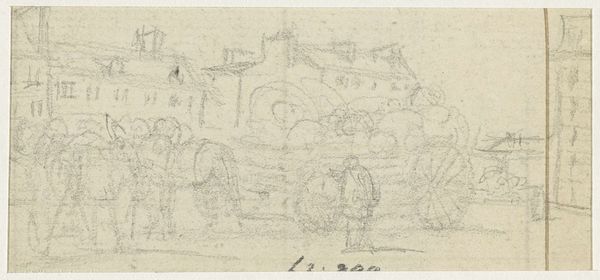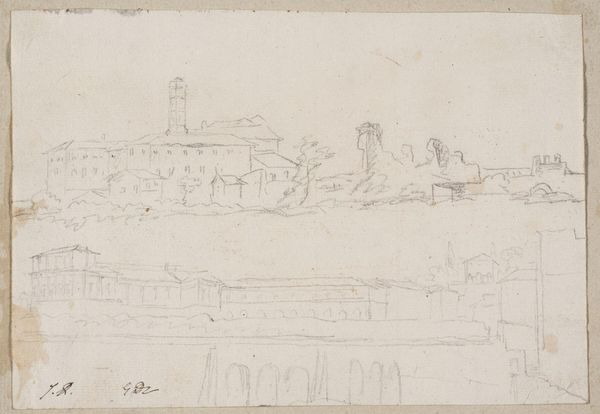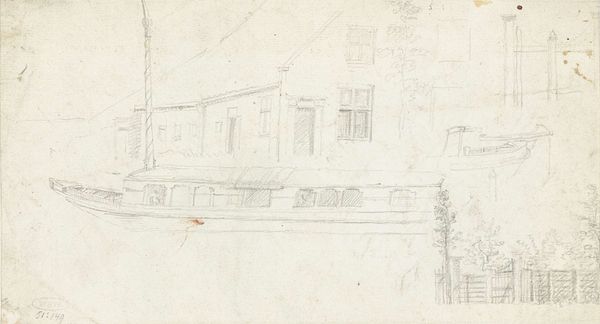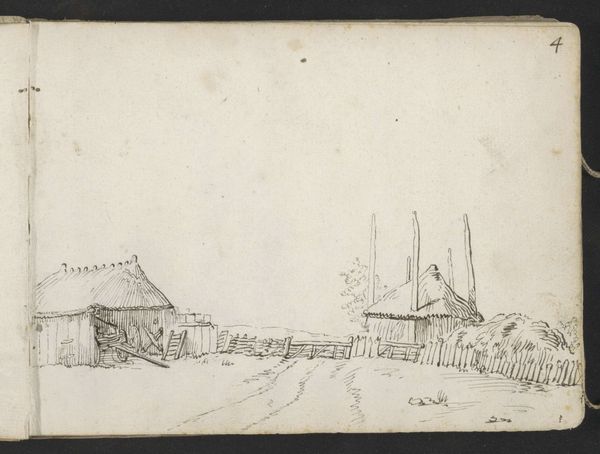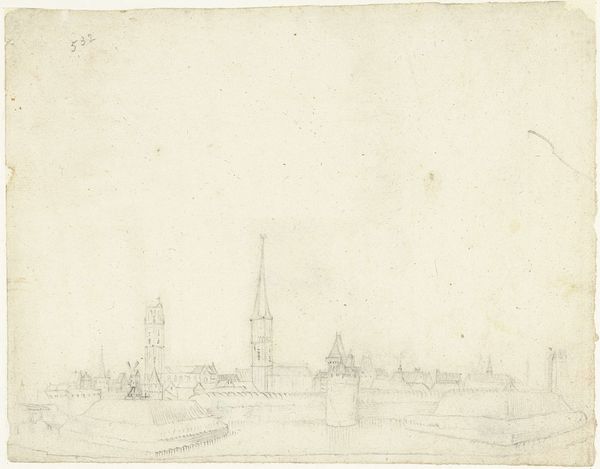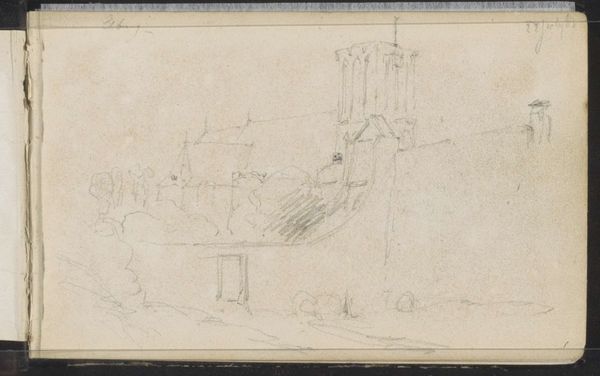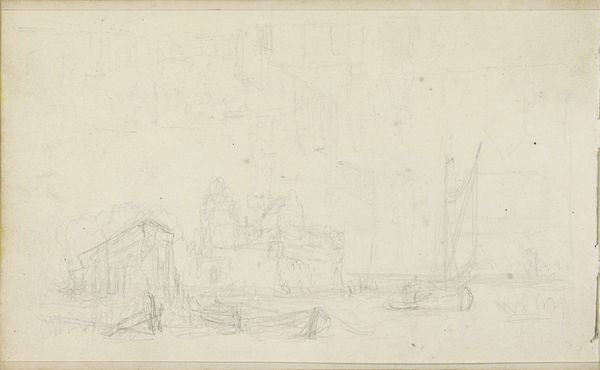
drawing, paper, pencil
#
drawing
#
aged paper
#
light pencil work
#
quirky sketch
#
dutch-golden-age
#
old engraving style
#
landscape
#
paper
#
personal sketchbook
#
sketchwork
#
pen-ink sketch
#
pencil
#
sketchbook drawing
#
cityscape
#
storyboard and sketchbook work
#
sketchbook art
#
realism
Dimensions: height 163 mm, width 203 mm
Copyright: Rijks Museum: Open Domain
Editor: This is "Grote Markt te Haarlem," a pencil and ink drawing on paper from 1634 by Gerard ter Borch the Younger, currently at the Rijksmuseum. It’s a quick sketch, almost ethereal in its lightness. What stands out to me is how economical his mark-making is. How do you approach a piece like this? Curator: This drawing intrigues me precisely because of its materiality. Look closely – the age of the paper, the type of pencil or stylus used. These elements tell us about artistic production in the 17th century. Ter Borch's process wasn't just about capturing a scene; it involved accessing and utilizing particular materials, reflecting a specific economy of artistic supplies. What kind of labor do you think was involved in the creation of the paper itself? Editor: That's interesting. I hadn’t considered the paper’s production. Were there specific guilds or trades involved in providing these materials? Curator: Precisely! The Dutch Golden Age saw the rise of specialized crafts and industries. Investigating the paper's source and manufacturing helps contextualize the drawing. It’s not just about high art; it connects us to the broader world of skilled artisans and trade networks. This challenges any perceived divide between "art" and "craft," showing their interconnectedness. Consider the social context too - Haarlem was a thriving center of commerce. How did this setting influence ter Borch’s choice of subject and materials? Editor: So, seeing this less as a detached artistic vision and more as a product of specific material conditions? I guess I see how focusing on process and production gives us insight into its cultural place. Curator: Exactly! It’s about unearthing the tangible, material reality that underpinned artistic creation, then and now. By analyzing the materials, the tools, and the methods of production, we reveal so much about the society that produced the art. Editor: That really reframes how I see not just this sketch, but other works too. It's about more than just the image. Curator: Yes, considering it alongside the broader economic and social fabric illuminates aspects we might otherwise miss. Thanks, that's very helpful.
Comments
No comments
Be the first to comment and join the conversation on the ultimate creative platform.
